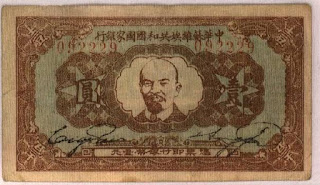 Many Western astrologers assume modern Western astrology owes its origins to the discovery of astrology by the ancient Babylonians. [1] They also consider that astrology was further developed by the Egyptians of antiquity before reaching its penultimate stage in the Hellenic world. Further, they consider that the 'horoscopic astrology' of the Hellenic world informed astrology in India. At the same time, the evidence suggests 'horary astrology' was originally developed by Indian astrologers. [2] The above conclusions are strictly based on an interpretation of the literary record. One important anomaly has, however, emerged in this story, which this article explores.
Many Western astrologers assume modern Western astrology owes its origins to the discovery of astrology by the ancient Babylonians. [1] They also consider that astrology was further developed by the Egyptians of antiquity before reaching its penultimate stage in the Hellenic world. Further, they consider that the 'horoscopic astrology' of the Hellenic world informed astrology in India. At the same time, the evidence suggests 'horary astrology' was originally developed by Indian astrologers. [2] The above conclusions are strictly based on an interpretation of the literary record. One important anomaly has, however, emerged in this story, which this article explores.
Fully formed birth
 As in the story of the Greek goddess Athena, it appears that the highest stage of astrology, horoscopic astrology, sprang forth fully formed in Hellenic literature of the late 2nd century BCE or early 1st century BCE, without any evdience of astrology appearing earlier in Greek thought. This is a startling feat. But how realistic is this theory? There is one Indian book that survives from the earliest time of recorded Greek astrology and it is called the Yavanajataka (Astrology of the Greeks) by Sphujidhvaja. [3] While these facts present us with a case for concluding that Greek astrology informed Indian astrology, it ignores a number of critical historical facts. There is also considerable controversy over the timing and origin of this work, as discussed below.Ancient Indus Valley civilization
As in the story of the Greek goddess Athena, it appears that the highest stage of astrology, horoscopic astrology, sprang forth fully formed in Hellenic literature of the late 2nd century BCE or early 1st century BCE, without any evdience of astrology appearing earlier in Greek thought. This is a startling feat. But how realistic is this theory? There is one Indian book that survives from the earliest time of recorded Greek astrology and it is called the Yavanajataka (Astrology of the Greeks) by Sphujidhvaja. [3] While these facts present us with a case for concluding that Greek astrology informed Indian astrology, it ignores a number of critical historical facts. There is also considerable controversy over the timing and origin of this work, as discussed below.Ancient Indus Valley civilization
 There is no doubt that an advanced tantric civilization existed in ancient India that predates the Greek and Babylonian civilizations. [4] The religious text of the Upanishads, which many date to the 2nd or 3rd millennia BCE or earlier, was likely recorded later. These texts contain a variety of advanced astronomical calculations, including planetary combinations and eclipses. [5] David Frawley has shown that the zodiac was described in the religious texts of the ancient Vedic civilisation, at least one thousand years before astrology appeared in Greece. The Vedanga Jyotishya, the earliest known astrology text, based on Sun-Moon astronomical calculations for ritual purposes, was written around 1200 BCE but is likely much older. [6] The fact that the term for astrology, Jyotishya, was known in vedic India is another confirmation of its earlier existence there. Studies of the ancient Indus Valley civilization, even before the Greek civilization emerged, reveal an important role of astrologers in royal courts and daily village life. [7] Dearth of documentationThe problem scholars are encountering with regard to Vedic astrology is the lack of historical documentation. In addition to the risk of ancient information simply becoming lost over time, the most profound reason for the absence of such written information in modern times is "The Vedic veneration for Sanskrit as a sacred speech, whose divinely revealed texts were meant to be heard, recited and memorized rather than transmitted in writing." [8] Moreover, in the stratified Indian society, the Brahmin class of intellectuals, to which astrologers belonged, is known to have preserved some of their knowledge through an oral transmission of the 'sutras' (verses of knowledge) from one generation to the next rather than through transcribing. These reasons suggest that, aside from the major or foundational works, not much would have been written about the ancient enlightenment knowledge of the Vedas. This could have been more relevant when it comes to the propagation of Vedic astrology knowledge over time. This makes it more important to study and understand the circumstantial evidence concerning such knowledge, its emergence, social importance and development in the ancient Indus Valley civilization.
There is no doubt that an advanced tantric civilization existed in ancient India that predates the Greek and Babylonian civilizations. [4] The religious text of the Upanishads, which many date to the 2nd or 3rd millennia BCE or earlier, was likely recorded later. These texts contain a variety of advanced astronomical calculations, including planetary combinations and eclipses. [5] David Frawley has shown that the zodiac was described in the religious texts of the ancient Vedic civilisation, at least one thousand years before astrology appeared in Greece. The Vedanga Jyotishya, the earliest known astrology text, based on Sun-Moon astronomical calculations for ritual purposes, was written around 1200 BCE but is likely much older. [6] The fact that the term for astrology, Jyotishya, was known in vedic India is another confirmation of its earlier existence there. Studies of the ancient Indus Valley civilization, even before the Greek civilization emerged, reveal an important role of astrologers in royal courts and daily village life. [7] Dearth of documentationThe problem scholars are encountering with regard to Vedic astrology is the lack of historical documentation. In addition to the risk of ancient information simply becoming lost over time, the most profound reason for the absence of such written information in modern times is "The Vedic veneration for Sanskrit as a sacred speech, whose divinely revealed texts were meant to be heard, recited and memorized rather than transmitted in writing." [8] Moreover, in the stratified Indian society, the Brahmin class of intellectuals, to which astrologers belonged, is known to have preserved some of their knowledge through an oral transmission of the 'sutras' (verses of knowledge) from one generation to the next rather than through transcribing. These reasons suggest that, aside from the major or foundational works, not much would have been written about the ancient enlightenment knowledge of the Vedas. This could have been more relevant when it comes to the propagation of Vedic astrology knowledge over time. This makes it more important to study and understand the circumstantial evidence concerning such knowledge, its emergence, social importance and development in the ancient Indus Valley civilization.
Alexander the Great opens up the world
 Alexander the Great blazed a trail into India in the late 4th century BCE, exposing the Greek world to new ideas and techniques from the East and creating the Hellenic civilization in the process. Among the influences coming from India were an advanced and humane cosmology and stunning scientific discoveries in mathematics. In turn, Greek became the 'lingua franca' of the Bactrian Greek kingdoms, which extended into India.Greco-Indian civilization
Alexander the Great blazed a trail into India in the late 4th century BCE, exposing the Greek world to new ideas and techniques from the East and creating the Hellenic civilization in the process. Among the influences coming from India were an advanced and humane cosmology and stunning scientific discoveries in mathematics. In turn, Greek became the 'lingua franca' of the Bactrian Greek kingdoms, which extended into India.Greco-Indian civilization
 Following the Classical period of Greece from 490 BCE to 323 BCE, the Hellenic civilization is considered to represent the zenith of Greek influence in the ancient world. This period ran from 323 BCE to sometime during the 1st century BCE. In the Greco-Roman civilization that followed, Greek culture, art and literature permeated Roman society, whose elite spoke and read Greek as well as Latin. After the conquest of Alexander the Great, Hellenic kingdoms were established throughout south-west Asia and ancient Egypt. While this resulted in the export of Greek culture and language to these new realms, there is strong evidence that these new kingdoms were strongly influenced by the indigenous cultures.
Following the Classical period of Greece from 490 BCE to 323 BCE, the Hellenic civilization is considered to represent the zenith of Greek influence in the ancient world. This period ran from 323 BCE to sometime during the 1st century BCE. In the Greco-Roman civilization that followed, Greek culture, art and literature permeated Roman society, whose elite spoke and read Greek as well as Latin. After the conquest of Alexander the Great, Hellenic kingdoms were established throughout south-west Asia and ancient Egypt. While this resulted in the export of Greek culture and language to these new realms, there is strong evidence that these new kingdoms were strongly influenced by the indigenous cultures.
Earlier links
 The cultural link between the Mediterranean peoples and those of India goes back well before the Alexandrian conquests. There were the Silk and Incense trade routes as well as transport of animals and goods by sea for thousands of years before the Hellenic age. One manifestation of this is the fact that mathematical numbers were discovered in India, perhaps in the early 1st millennium BCE. These numbers found their way to the Mediterranean region and transformed the mathematics of the Arabs, although much later. Babylonian and Indian AstrologyScholars have less to go on when it comes to the relationship between Babylonian and Indian astrology. While it is certain that Babylonian astrology developed before Greek astrology, it was for the longest time not a horoscopic form of astrology. As astrology and astronomy developed together in antiquity, it is important that scholars have determined that Indian astronomy concepts predate the emergence of comparable concepts in Babylonian astronomy. [9] While the scholars do not assert that Babylonina astronomy was derived from Indian astronomy, at least they have shown the independent earlier development of Indian astronomy. This indicates that also astrology developed earlier in India. That said, the oldest surviving Vedic horoscopic astrology texts are from the period when horoscopic astrology had already been established in west Asia and around the Mediterranean sea. While future research will hopefully shed more light on this, let's look more closely at the circumstantial evidence.Pythagoras' debt to India
The cultural link between the Mediterranean peoples and those of India goes back well before the Alexandrian conquests. There were the Silk and Incense trade routes as well as transport of animals and goods by sea for thousands of years before the Hellenic age. One manifestation of this is the fact that mathematical numbers were discovered in India, perhaps in the early 1st millennium BCE. These numbers found their way to the Mediterranean region and transformed the mathematics of the Arabs, although much later. Babylonian and Indian AstrologyScholars have less to go on when it comes to the relationship between Babylonian and Indian astrology. While it is certain that Babylonian astrology developed before Greek astrology, it was for the longest time not a horoscopic form of astrology. As astrology and astronomy developed together in antiquity, it is important that scholars have determined that Indian astronomy concepts predate the emergence of comparable concepts in Babylonian astronomy. [9] While the scholars do not assert that Babylonina astronomy was derived from Indian astronomy, at least they have shown the independent earlier development of Indian astronomy. This indicates that also astrology developed earlier in India. That said, the oldest surviving Vedic horoscopic astrology texts are from the period when horoscopic astrology had already been established in west Asia and around the Mediterranean sea. While future research will hopefully shed more light on this, let's look more closely at the circumstantial evidence.Pythagoras' debt to India
 It has been suggested that the theorems of Pythagoras, from the early Classical period in Greece, are of an Indian origin. The Apastamba Sulba Sutra (circa 600 BC) contains a numerical proof of the general Pythagorean theorem, which many believe was based on earlier traditions. Further, it was theorized that Pythagoras visited Arakonam, India, and copied it. [10] While not much is known of Pythagoras based on his own writings, it is thought that he believed in reincarnation, a concept of Indian origin. In any event, there is much historical evidence for the notion that principal discoveries came from India that transformed the understanding of the peoples of the Mediterranean world. In the same way, the spread of Indian ideas to East Asia resulted in the transformation of the preexisting cultures.
It has been suggested that the theorems of Pythagoras, from the early Classical period in Greece, are of an Indian origin. The Apastamba Sulba Sutra (circa 600 BC) contains a numerical proof of the general Pythagorean theorem, which many believe was based on earlier traditions. Further, it was theorized that Pythagoras visited Arakonam, India, and copied it. [10] While not much is known of Pythagoras based on his own writings, it is thought that he believed in reincarnation, a concept of Indian origin. In any event, there is much historical evidence for the notion that principal discoveries came from India that transformed the understanding of the peoples of the Mediterranean world. In the same way, the spread of Indian ideas to East Asia resulted in the transformation of the preexisting cultures.
Greek communities in India
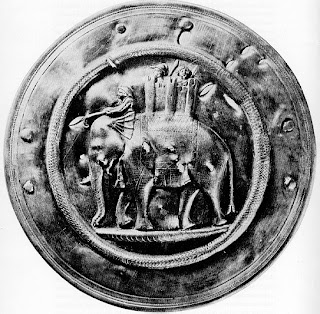 It is also a fact that following the conquest and colonization efforts of Alexander the Great around 323 BCE, Greek communities were established in India. However, shortly after his death, the Mauryan Empire extended its reach and overtook the Indus Valley region, which Alexander had conquered. The founder and ruler of the empire, Chandragupta, was a devotee of the Jain religion, which is part of the tantric civilization. The Greek communities were in the northwest region of Pakistan, notably ancient Gandhara near Islamabad, and in southern Afghanistan in the region of Gedrosia. Chandragupta was in conflict with the Greek king Seleucus I, ruler of the Seleucid Empire, who tried to reconquer the northwestern parts of India, during a campaign in 305 BCE, but failed. The two rulers finally concluded a peace treaty with the exchange of gifts, where Chandragupta received the territories of Kamboja, Gandhara, Kandhahar and Gedrosia, while Seleucus I received 500 war elephants. Diplomatic relations were established and several Greeks, such as the historian Megasthenes, Deimakos and Dionysius resided at the Mauryan court. Megasthenes wrote a major source book on India. [11] In ensuing centuries, the rulers of Greece continued to send ambassadors to India, with one, Heliodorus in the 1st century BCE, becoming a devotee of the Upanishads. These high level contacts and Greek communities in India confirm a steady flow of information between Greece and India. The Greek communities were still significant during the reign of the emperor Ashoka the Great, who ruled the Mauryan Empire from 273 to 232 BCE.
It is also a fact that following the conquest and colonization efforts of Alexander the Great around 323 BCE, Greek communities were established in India. However, shortly after his death, the Mauryan Empire extended its reach and overtook the Indus Valley region, which Alexander had conquered. The founder and ruler of the empire, Chandragupta, was a devotee of the Jain religion, which is part of the tantric civilization. The Greek communities were in the northwest region of Pakistan, notably ancient Gandhara near Islamabad, and in southern Afghanistan in the region of Gedrosia. Chandragupta was in conflict with the Greek king Seleucus I, ruler of the Seleucid Empire, who tried to reconquer the northwestern parts of India, during a campaign in 305 BCE, but failed. The two rulers finally concluded a peace treaty with the exchange of gifts, where Chandragupta received the territories of Kamboja, Gandhara, Kandhahar and Gedrosia, while Seleucus I received 500 war elephants. Diplomatic relations were established and several Greeks, such as the historian Megasthenes, Deimakos and Dionysius resided at the Mauryan court. Megasthenes wrote a major source book on India. [11] In ensuing centuries, the rulers of Greece continued to send ambassadors to India, with one, Heliodorus in the 1st century BCE, becoming a devotee of the Upanishads. These high level contacts and Greek communities in India confirm a steady flow of information between Greece and India. The Greek communities were still significant during the reign of the emperor Ashoka the Great, who ruled the Mauryan Empire from 273 to 232 BCE.
India and the Stoics
Legend has it that Chandragupta gave up his throne and adopted asceticism under the Jain saint, Bhadrabahu Swami. He breathed his last in 298 BCE in present day Karnataka. A small temple marks the Bhadrabahu Cave where he died. Ashoka was influenced by the spirituality of his grandfather, emperor Chandragupta. However, he converted to Buddhism, another prominent religion of the tantric civilization, after unleashing a bloody civil war to gain power. It is said that his conscience bothered him when surveying the battle fields after his victory. He then wrote the 'Edicts of Ashoka' which were carved in large stone pillars and placed throughout his empire to encourage citizens to emphasize goodness in daily life. It is likely no coincidence that the Stoic school of philosophy also empahsizing goodness in life and a universal divinity emerged in Athens some twenty or thirty years after Alexander's conquest of India and became popular among astrologers around the Mediterranean sea some one hundred and fifty years later. The influences and the direction of causality seem compelling.
Ascetism and the divine
There is a thread of ascetism running from ancient Vedic India, through Buddhism, to Judaism (the Essenes) and on to Christianity and finally, Islam. [12] A recent theory is that the idea of a God-man in the Christian and Islamic religions is an influence of earlier such expressions of divine men in the tantric religions of India, including the legends of Shiva and Krishna in the Vedic religion and of Buddha in the Buddhist religion. This notion represents a clear break with the existing monotheistic religion of the Jews or the ahistoric personified gods of the Greeks and Romans. Such influences suggest the Hellenic age would more appropriately be considered a Greco-Indian age; in the sense that new ideas came to the Greek controlled Mediterranean region from India. [13] To examine the literary record without considering this historical context may explain why some have rushed to judgment about the origin of horoscopic astrology. Let us now turn to the astrology of the ancient world.
Controvery over the YavanajatakaThere is an ongoing debate in India about the 'Astrology of the Greeks', both its origin and time of writing. Rather than being written in the time of Alexander the Great as some have suggested, scholars have concluded it was written in the 2nd or 3rd century AD. Agastya Rishi has suggested Yavanajataka was not a Greek but a Yavana work. In this regard, he notes that the Yavana's used Navamsa (9th house divisional) charts while contemporary Hellenistic astrologers like Vettius Valens, Firmicus Maternus and Theodorus of Sidon did not. [14] He also points out that while all Greeks were Yavanas not all Yavanas were Greeks. Some Indian scholars have concluded that the Greeks didn't have astrology at the time of Alexander, but that astrology was introduced to Greece after 280 BC by a certain Berrossus, more than 50 years after the death of Alexander. In other words, there is considerable controversy surrounding the conclusions that may be drawn from the existence of this book, the Astrology of the Greeks.
Origins of Horoscopic Astrology
Horoscopic astrology is a form of astrology which uses a graphical representation of the Sun, Moon and planets with reference to the twelve signs of the zodiac at any given moment in time. A critical ingredient of horoscopic astrology is the use of twelve houses, beginning with the ascendant, the sign that rises over the Eastern horizon at any given moment of time. The word for the ascendant in Greek is horoskopos. Meanwhile, the word for the study of the stars in the West is astrology, meaning the ‘logic of the stars’. Over time, horoscopic astrology has come to denote the study of astrology in terms of a chart as a whole. The debate whether this most developed form of astrology originated in the Hellenic or Vedic civilization is examined more closely here.
Horoscopic formats
 In the respected work Greek Horoscopes, by Neugebauer and van Hoesen, three basic horoscopic formats are shown. [15] The two to the right are found most often in "Latin and Islamic astrological literature." The middle one is the very same horoscope format used in North India to this day.
In the respected work Greek Horoscopes, by Neugebauer and van Hoesen, three basic horoscopic formats are shown. [15] The two to the right are found most often in "Latin and Islamic astrological literature." The middle one is the very same horoscope format used in North India to this day.
Primacy of the ascendant
 In Holden's History of Horoscopic Astrology there is the following reproduction from the translation by Pingree of the Astrology of the Greeks. [16] It is the earliest literary horoscope recorded in Greece. While not exactly shaped like a Vedic chart it is of considerable importance that the ascendant is placed at the top of the diagram, which is the ancient custom of Vedic astrology. It is known that later practitioners of Greek and Roman astrology moved the ascendant to the left side of the chart, the horoskops. This was linked to the increased focus of astrologers on the Sun and its physical appearance over the horizon in the morning. This emphasis on the Sun was also related to the seasons, which the solar cycle governs. In effect, this was part of a gradual transformation of astrology, which over time became modern Western astrology. At the same time, it is likely that this transformation was a critical evolutionary mistake in the practice of astrology in the West.
In Holden's History of Horoscopic Astrology there is the following reproduction from the translation by Pingree of the Astrology of the Greeks. [16] It is the earliest literary horoscope recorded in Greece. While not exactly shaped like a Vedic chart it is of considerable importance that the ascendant is placed at the top of the diagram, which is the ancient custom of Vedic astrology. It is known that later practitioners of Greek and Roman astrology moved the ascendant to the left side of the chart, the horoskops. This was linked to the increased focus of astrologers on the Sun and its physical appearance over the horizon in the morning. This emphasis on the Sun was also related to the seasons, which the solar cycle governs. In effect, this was part of a gradual transformation of astrology, which over time became modern Western astrology. At the same time, it is likely that this transformation was a critical evolutionary mistake in the practice of astrology in the West.
Vedic astrology
In India, the birth chart is known with its sanskrit name as a Kundli or Rasi chart, while the rising sign is called the Lagna. The term for astrology is Jyotisha, meaning the ‘science of light’. The astrology of India is alternately called Indian astrology, Hindu astrology or Vedic astrology. The term Indian reflects the geographic location of the astrology. The term Hindu represents the modern cultural expression of the astrology. Meanwhile, Vedic reflects the ancient tantric philosophy of this type of astrology. In the Vedas, astrology was considered the sixth limb of enlightenment knowledge. The cosmology of the Vedas is arguably the most important ingredient of astrology, including the 'law of karma'. In fact, the planets, grahas, represent the accumulated karma of the soul, to be expressed in the life, but giving scope for the expression of our 'free will'. Hence, the term Vedic astrology is preferred. Vedic astrology is still practiced today, much like it was many thousands of years ago. It is the modern system of horoscopic astrology closest to that practiced in the Hellenic world.
Signs, houses and planets
 Horoscopic astrology is based on signs, houses and planets and their meaning is well established. The sanskrit names of the signs and planets are shown here. The mythology of Rahu and Ketu streteches back into antiquity, related to the knowledge of the ancient Rishis (sages) of the eclipses.Houses and their meaning
Horoscopic astrology is based on signs, houses and planets and their meaning is well established. The sanskrit names of the signs and planets are shown here. The mythology of Rahu and Ketu streteches back into antiquity, related to the knowledge of the ancient Rishis (sages) of the eclipses.Houses and their meaning
What gave birth to horoscopic astrology as we know it is the concept of houses. The logic of the twelve houses is tied to the twelve signs. The houses show the areas of life where the influences of the planets and signs manifest. The rising sign is considered to be the first and most important house as it represents the person. The others houses, which represent key areas of the life, are counted from the sign falling in the first house. The twelve houses have been identified to represent the following meaning in the life of the individual.
1st: SELF, e.g. physical attributes, personality, fame & well being.
2nd: RESOURCES, e.g. family, wealth & status.
3rd: EFFORTS, e.g. younger siblings, actions, speech & courage.
4th: INTERESTS, e.g., mother, education, inner harmony & home.
5th: CREATIVITY, e.g. children, romance, speculation & trading.
6th: OPPOSITION, e.g. enemies, fixity of views, debts, health & conflict.
7th: PARTNER, e.g. husband/wife, foreign trips & leisure.
8th: ENDINGS, e.g. obstacles, death, inheritance, fathers income & beliefs.
9th: SUPPORT, e.g. father, guidance, higher thought, fortune & foreign things.
10th: CAREER, e.g. public persona, professional activities & fame.
11th: GOALS, e.g. elder brother, friends, plans, hopes, ideals & income.
12th: SEPARATION, e.g. grandfather, losses, far away places & prison.
Systems' Approach The logic of house rulerships by the planets is also unique for each ascendant and this is the essence of the Systems' Approach (SA) to vedic astrology. The planet 'ruling' a Moolatrikona (MT) sign becomes a functional ruler of the house that the MT sign falls into. In addition to its general nature, the planet carries with it, more importantly, a functional nature of the particular house its MT sign falls in. The other sign a planet may 'own' (excluding the Sun and Moon) and the house it falls in becomes less important for the overall horoscopic interpretation. That said, whatever house a planet resides in, its functional and general indications get expressed in that area of the life.
The logic of house rulerships by the planets is also unique for each ascendant and this is the essence of the Systems' Approach (SA) to vedic astrology. The planet 'ruling' a Moolatrikona (MT) sign becomes a functional ruler of the house that the MT sign falls into. In addition to its general nature, the planet carries with it, more importantly, a functional nature of the particular house its MT sign falls in. The other sign a planet may 'own' (excluding the Sun and Moon) and the house it falls in becomes less important for the overall horoscopic interpretation. That said, whatever house a planet resides in, its functional and general indications get expressed in that area of the life.
The dynamic changes for each ascendant. Those with the sign Aries rising are expected to approach life differently than those with say the sign Virgo rising.
Mars becomes 1st lord for Aries while Mercury becomes 1st lord for Virgo. By comparison Mars becomes 6th lord for Scorpio ascendants and Mercury becomes 4th lord for Gemini's and this means the planets take on a different functional meaning for these ascendants. There are many more considerations for a horoscopic reading based on SA vedic astrology, but this gives some sense of the logic.
Whole sign house system
Importantly, in the original horoscopic astrology the houses are considered to be equivalent to one whole sign. While the whole sign house system appeared in Greece, later developments in Western astrology changed this original scheme.
A singular problem
A singular problem in the history of astrology is the fact that many of its students and practitioners have shown a tendency for insufficient wherewithal to master the basic elements of astrology. Alternatively, they may have been working with an ineffective method or system of astrology. In any event, due to their failiure to achieve success in interpreting horoscopes or making accurate predictions, the disaffected astrologers have tended to seek new ideas or techniques, with many such efforts of doubtful value. Over time this has led to the introduction of a confusing array of ideas and techniques in astrology, which have obscured the essence of astrology as a language of the stellar influences. In general, while Vedic astrology has also been saddled with this tendency, an even greater tendency for this has been seen in Western astrology. After science and the scienctific method emerged in the Hellenistic age, with advances in astronomical knowledge, there arose a tendency to incorporate new astronomical insights into astrological practices, which reduced the interpretative and predictive accuracy.
Evolutionary wrong turn
There are several key mistakes that can be linked to the practice of astrology in the Roman Empire, its disappearance during the dark ages and the rediscovery of astrology in the West in the early middle ages. A key mistake was that medieval astrologers took to heart a recommendation in the grossly overrated astrology text Tetrabiblos, by Ptolemy. [17] Not only did this book reproduce an altered and incorrect version of older astronomical tables, showed no evidence of basic horoscopic astrology, but it provided the flawed advice to anchor the 0° Aries of the zodiac on the vernal point rather than to adjust the zodiac for the drift associated with the precession of the equinoxes as the Indians have consistently done, with the aid of the ‘ayanamsa’ calculation. The sidereal zodiac is therefore fixed in real sense. [18] Or as David Frawley points out, the Indians, who knew about precession for a long time, kept the zodiac fixed on the outer constellations while the Western astrologers kept theirs focused on the narrower seasonal cycle of the Sun. This mistake led to the evolution of the 'tropical' or moving zodiac in the West and the associated drift of the signs away from their original and visible constellational locations, such that the signs are now almost a whole sign away from their visible counterparts. Western astrology also developed an overemphasis on the role of the Sun in astrology, with the Sun sign becomnig the predominant key to a reading, rather than the ascendant as in the original horoscopic astrology. Moreover, in Western astrology houses became to be considered as independent of the signs, due to astronomical innovations or errors, such that they were allowed to overlap signs and become unequal. Thus, to compound the zodiac problem, the whole sign house system fell out of the astrological practice of the West. In the modern age, Western astrology has been further burdened by the tendency of its practitioners to adopt newly discovered invisible planets, often tiny outlying bodies in the solar system, and graft on to them ancient Greek mythological meanings as possible influences, with little evidence aside from their assertions of their influences. While the planets were given names of Roman gods, there is scant evidence that the astrology of Hellenic age was driven by Greek mythological meanings. That said, in renaming the planets and signs, and altering the horoscope format, a truly unique Greek astrology was born. No matter, the result of all these wrong turns is that Western astrologers have mostly been left with the study of planetary influences, stripped of the accurate sign and house meanings. While this is a sad state of affairs for those beholden to this form of astrology, hopefully this article will help some to rediscover the roots of the more comprehensive horoscopic astrology of which the astrology of the Vedas is still a living branch.
Visible astrology of the Vedas
The practitioners of Vedic astrology have never lost view of the visible planets, the original sidereal zodiac or the whole sign house system. As a result, Vedic astrology has been spared the greater confusions of Western astrology. The contribution of the Systems’ Approach has been to remove the accumulated contradictions and confusions, to further hone the interpretative and predictive accuracy of Vedic astrology.  In the ancient Bhagvad Gita of the Upanishads there is the following verse: "The splendor of the sun, which dissipates the darkness of this whole world, comes from Me. And the splendor of the moon and the splendor of fire are also from Me" (Chapter 15, Verse 12). This and many other statements about eclipses, the other planets and prophecy demonstrate the complete integration of astrology with the Vedic concept of the divine.In sum,- an examination of the Babyloninan, Egyptian, Greek, Roman and Arabic literal record is not giving a comprehensive picture
In the ancient Bhagvad Gita of the Upanishads there is the following verse: "The splendor of the sun, which dissipates the darkness of this whole world, comes from Me. And the splendor of the moon and the splendor of fire are also from Me" (Chapter 15, Verse 12). This and many other statements about eclipses, the other planets and prophecy demonstrate the complete integration of astrology with the Vedic concept of the divine.In sum,- an examination of the Babyloninan, Egyptian, Greek, Roman and Arabic literal record is not giving a comprehensive picture
- the historical setting has to be examined
- knowledge of ancient Indian texts (in Sanskrit) is still incomplete
- oral transmission intra-familia was likely the way that this knowledge was propagated in India in ancient times
- the spread to the West of horoscopic astrology after the invasion by Alexander may have been through Indian court-astrologers
- the trantric civilization opened up human beings to deeper knowledge of a living idealism, through meditation and true assessment. Importantly, astrology was perceived as an integral part of the religious traditions.
- the fidelity of Indian astrologers with the Ayanamsa correction, the horoscope format and horoscopic astrology in its original form is likely the single greatest clue about the source of this knowledge being India. - despite being continuously modified through astronomy, technique and general knowledge, the divine knowledge has depreciated steadily in the West as a meaningful language of the cosmic influences on human life. The conflict between astrology and the Christian religion as well as the reign of materialism in the modern age are likely contributing factors.
Conclusion
While there is literary evidence of works of Greek astrologers in the late Hellenic age, including the transportation of one such book to India in Roman times, this is far from sufficient proof of the origins of horoscopic astrology. Given the caste system, Indian astrologers likely passed down their astrology knowledge intra-familia, avoiding to disseminate it in book form. It is more likely that an oral transmission of Vedic astrology knowledge to the Hellenic world took place, perhaps through Indian court astrologers. After mastering the horoscopic astrology system, the Greek astrologers set about to modify and enhance it with a number of astronomical innovations, a new naming system, a new horoscope format and likely some novel insights. It would have been transcribed by the Greeks and re-exported to India in that form. Understandably, it would have been recognised as a novel contribution by Indian astrologers of that age. Nevertheless, given the monumental contribution of Indian civilization to philosophy and science - not least the human praxis of enlightenment - it is ahead of us to perform research into the ancient sanskrit texts, to the extent that they exist, and other sources to settle this matter once and for all. However, we also need to put this issue in its proper perspective. While it is helpful to understand how these ideas emerged, spread and evolved, as my friend Rémi stated so well "what is really important is the development of the practitioner's efficiency in this day and age." In a similar vein, astrologer & author V.K. Choudhry has observed: "All ancient knowledge needs changes for the present era. Tracing history is one thing but finding validity is more important." Indeed, this is the chief concern of those applying the System's Approach.
References [1] See for instance Rochberg, Francesca, "Babylonian horoscopes," The American Philosophical Society, 1998 or Scofield, Bruce, "The Nature of Mesopotamian and Non-Western Astrology" [retrieved on Oct. 10, 2009]
http://www.onereed.com/articles/nonwesternast.html[2] Brennan, Chris, "The Transmission of Hellenistic Astrology to India" [retrieved on Oct. 10, 2009]
http://horoscopicastrologyblog.com/2008/12/11/the-transmission-of-hellenistic-astrology-to-india/[3] Sphujidhvaja, “Yavanajataka,” 2 volumes, translated by David Pingree, 1978, Harvard University Press. See also reproduction of the text in English online at
http://www.astrojyoti.com/yavanajatakamainpage.htm[4] Frawley, David, “Gods, sages and kings: Vedic secrets of ancient civilization,” 1991, Passage Press and "Vedic Origins of the Zodiac", October 13, 2009 [Retrieved on Oct. 29, 2009].
http://www.indiadivine.org/articles/1090/1/Vedic-Origins-of-the-Zodiac/Page1.html[5] Scientific Verification of Vedic Knowledge (video)
http://video.google.com/videoplay?docid=7678538942425297587#
See also R. N. Iyengar, "Dhruva the Ancient Vedic-Hindu Pole Star"
http://www.scribd.com/doc/20298010/Dhruva-the-Ancient-Vedic-Hindu-Pole-Star[6] Vedanga Jyotishya
http://www.vedicastronomy.net/vedanga.htm and
http://www.desitip.com/servlet/drenderer?sel=Astrology[7] Sen, Sailendra Nath, "Ancient Indian History and Civilization," 1988, New Age Internationla Publishers.
[8] Plofker, Kim, "Mathematics in India," 2009, Princeton University Press.
[9] Kak, Subhash, "Babylonian and Indian Astronomy: Early Connections," Jan 2003. [Retrieved on Oct. 11, 2009]
http://arxiv.org/abs/physics/0301078[10] Van der Waerden, Bartel Leendert, “Geometry and Algebra in Ancient Civilizations,” 1983 and “Apastambiya-Sulvasutra,” ed. and translated into German by Albert Bŭrk, ZDMG, Vols 55, 56. 1901-02
[11] Dahlaquist, Allan, "Megasthenes and Indian Religion," 1962, Motilal Banarsidass.
[12] Bartram, John A., "Greco-India and Divine Men" [retrieved on Oct. 10, 2009]
http://apps.facebook.com/faceblogged/?t=viewcatentries&cid=6229&_fb_fromhash=a96f9953f90f20b6c152c919c3ada255[13] Greco Buddhism [retrieved on Oct. 10, 2009]
http://en.wikipedia.org/wiki/Greco-Buddhism[14] Discussion of origin of 'Astrology of the Greeks' (open archive)
http://groups.yahoo.com/group/JyotishGroup/message/24895 and of Indian astrology (membership required) at
http://groups.yahoo.com/group/Indian_Astrology_Group_Daily_Digest[15] Neugebauer, O and H. B. Van Hoesen, "Greek Horoscopes", 1987, The American Philosophical Society.
[16] Holden, James H., "History of Horoscopic Astrology", 1996, AFA.
[17] Ptolemy, "Tetrabiblos," 1822, J.M. Ashmand, Davis and Dickson.
[18] Gleadow, Rupert, "The Origin of the Zodiac," 1968, Dover Publications.
 The evolution of the financial crisis that emerged in 2007, peaked in the autumn of 2008 and began to wind down in 2009 has been accurately predicted based on the SAMVA USA chart. Actually, the predictions pretty much "nailed it." The following timeline of the financial crisis and predictions made demonstrate this in a convincing manner.
The evolution of the financial crisis that emerged in 2007, peaked in the autumn of 2008 and began to wind down in 2009 has been accurately predicted based on the SAMVA USA chart. Actually, the predictions pretty much "nailed it." The following timeline of the financial crisis and predictions made demonstrate this in a convincing manner.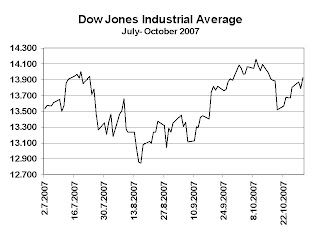 Worldwide "credit crunch" as subprime mortgage backed securities are discovered in portfolios of banks and hedge funds around the world, from BNP Paribas to Bank of China. Federal Reserve injects about $100 billion into the money supply for banks to borrow at a low rate.
Worldwide "credit crunch" as subprime mortgage backed securities are discovered in portfolios of banks and hedge funds around the world, from BNP Paribas to Bank of China. Federal Reserve injects about $100 billion into the money supply for banks to borrow at a low rate.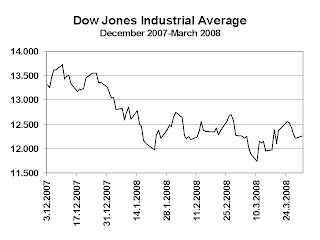 January 2–21: Stock market downturn.
January 2–21: Stock market downturn. September 7: Federal takeover of Fannie Mae and Freddie Mac, which at that point owned or guaranteed about half of the U.S.'s $12 trillion mortgage market, effectively nationalizing them.
September 7: Federal takeover of Fannie Mae and Freddie Mac, which at that point owned or guaranteed about half of the U.S.'s $12 trillion mortgage market, effectively nationalizing them. March 8: Blackstone Group CEO Stephen Schwarzman says that up to 45% of global wealth has been destroyed by the global financial crisis.
March 8: Blackstone Group CEO Stephen Schwarzman says that up to 45% of global wealth has been destroyed by the global financial crisis.



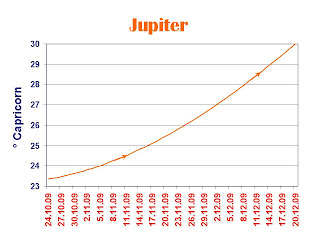


_transits-22Oct2009.jpg)




















